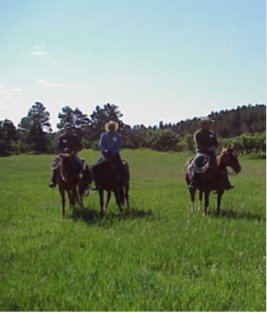
By Scott Cotton, UNL Extension Educator
Seral stage is a reference to what developmental stage a plant community is currently within.
Plant communities which have been impacted by disturbances and set back to earlier types of plant communities are considered to be “low” or “developing” seral stage. Plant communities which are considered to be mature, stable, and usually desirable are considered to be “high” seral stage. “High” seral stage is usually what some environmental interests refer to as “climax” or “relic” areas.
It’s important to realize that “high” or “low” seral stage does not indicate the “desirable” plant community since that can vary with the goals of a landscape manager.
Drought, wildfire, and over-grazing are types of rangeland impacts which have the potential to shift the condition of a range site to a lower or developing seral stage if the impacts are serious enough or repeated without a significant opportunity for a site to recover.
Economic considerations of rangeland impacts have been studied in the United States since about 1927 and a series of correlations have been developed.
In his paper “Principles of Sustainable Rangeland Management” (SRM May 2005), Dr. Timothy Steffens compared the economies of developing/low seral rangelands with those of high seral range sites.
DEVELOPING/LOW SERAL SITES:
• Relatively low number and diversity of producers,
• Relatively high year-to-year variation in production,
• Average potential productive life of producer relatively short,
• Wealth/biomass concentrated among a few groups,
• Cycling of resources relatively slow, with small volatile, short term nutrient pools,
• Much leakage of wealth or raw material from the ecosystem,
• Large scale fluxes in “capital assets” of the system,
• Wide environmental variation.
This is a rangeland scenario common to southeastern Colorado and northern New Mexico where the average forage production is often 500-800 pounds per acre except on riparian areas and other high production sites.
HIGH SERAL SITES:
• Relatively large number and variety of producers,
• Relatively low year-to-year production variation,
• Average productive producer life relatively long,
• Wealth/biomass more evenly dispersed among groups,
• Cycling of resources relatively rapid with stable resource pools,
• Most wealth/raw material stays in system (low erosion),
• Quantities of “capital assets” remain fairly stable,
• Environment fairly stable.
Hopefully our region can remain on the “high” side of seral and economy, but it serves to watch for these indicators in addition to closely watching for shifts in plant communities to determine if an actual shift is underway. By using reasonable stocking rates for the forage we actually have we can minimize the shift.
For more UNL Beef information go to http://beef.unl.edu